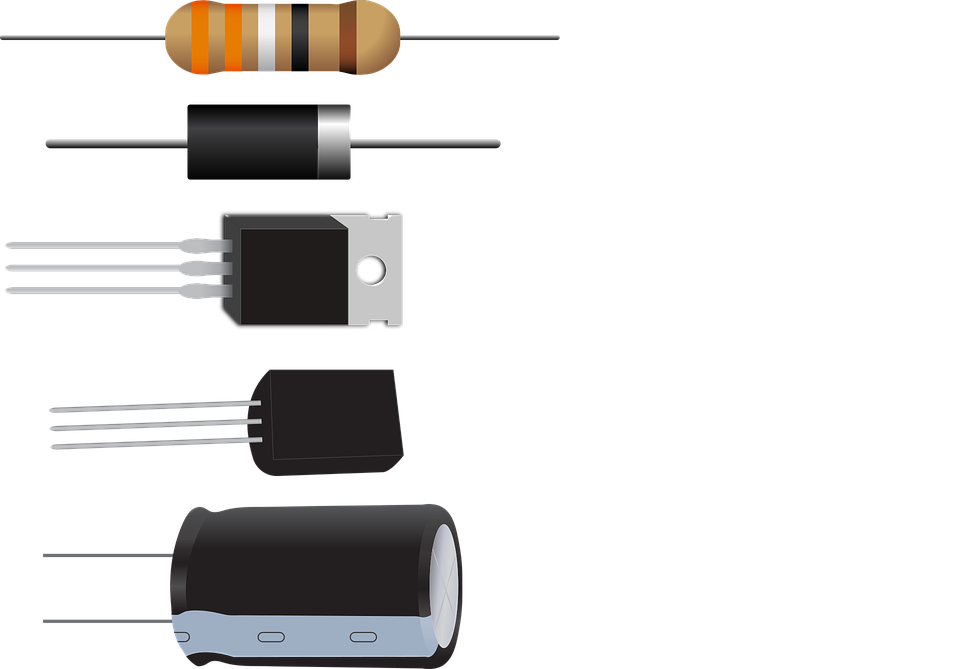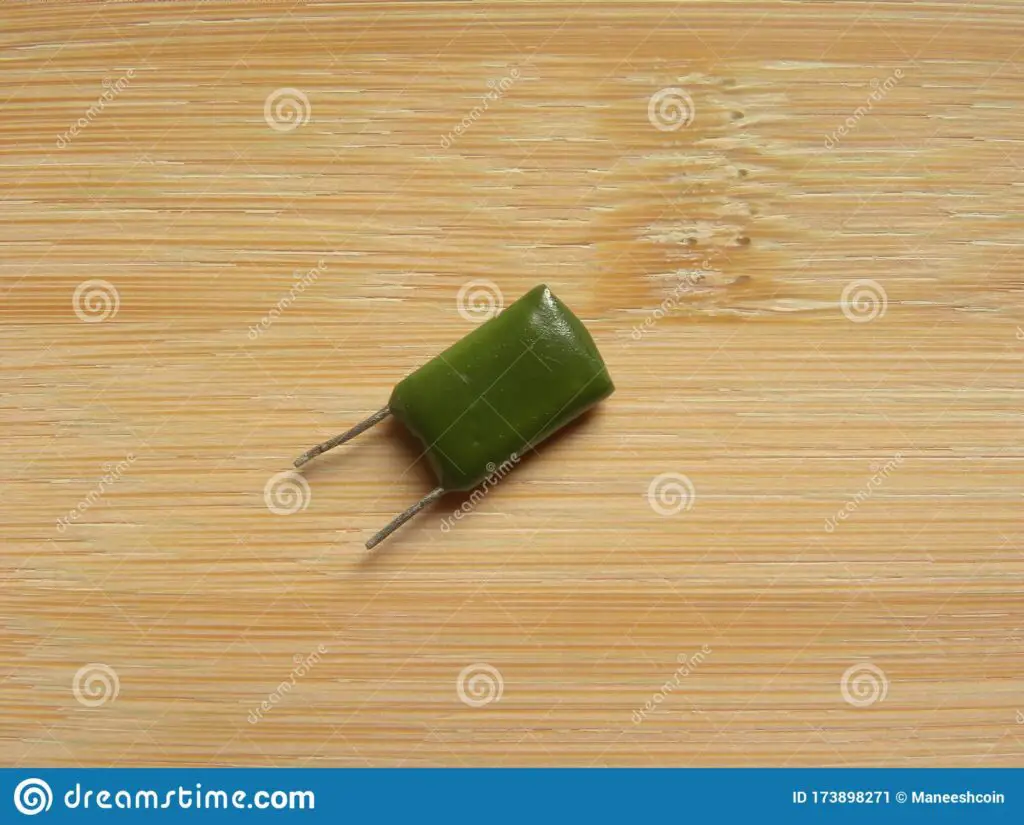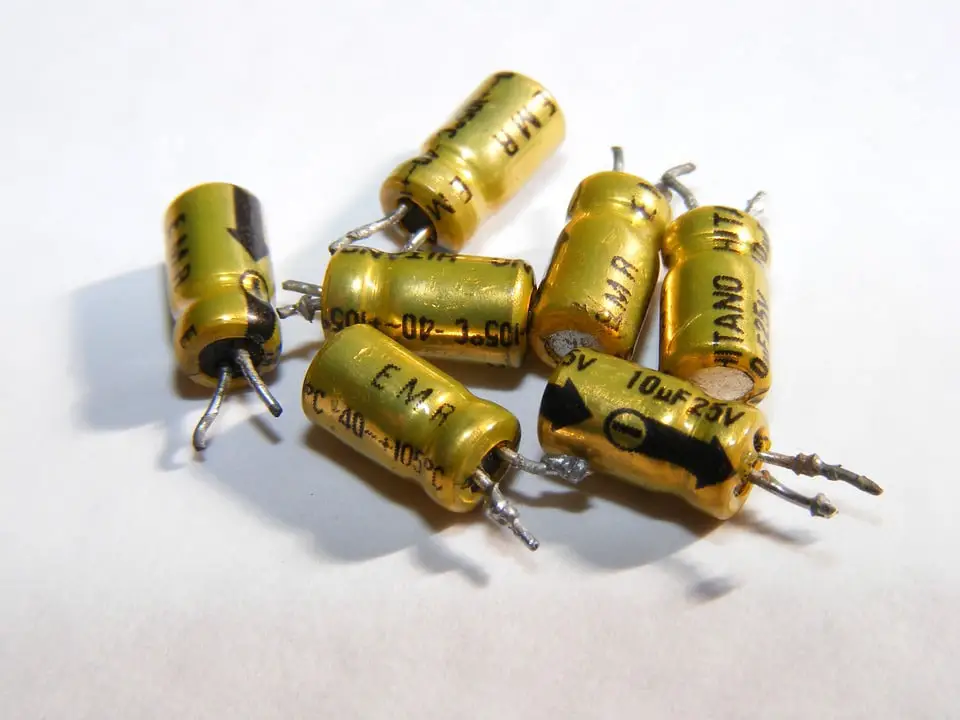Capacitors are important in circuit flow; they are introduced to store electricity in conductive terminals. There are two major types of capacitors, namely, electrolytic capacitors and ceramic capacitors.
These capacitors are differently designed to carry out slightly different purposes.
Looking for the difference between electrolytic & ceramic capacitors? The former uses thin oxide layers as dielectric, while the latter uses ceramic dielectrics.
Practically, every electronic device has at least one capacitor, and this includes both smartphones and portable speakers.
For today’s article, we’re focusing on the major difference between electrolytic & ceramic capacitors.
However, to make this article simpler to understand, hereunder is the overview of capacitors and how they work.
Table of Contents
What is a Capacitor?
Put simply, a capacitor is an electronic device that is capable of retaining (storing) electrical current in the form of a “Charge.”
In other words, any device you can charge has a capacitor built into it. Since capacitors are to store electrical energy, they are designed using conductive terminals, usually two terminals.

The terminals (conductors) are typically situated nearby, separated using a dielectric material to prevent the two electrically charged terminals from coming into direct contact, which could cause an explosion.
Among the several types of capacitors, the commonest are ceramic, paper, tantalum, and niobium electrolytic capacitors.
Note: The effectiveness of a capacitor is known as “Capacitance.”
Ceramic Capacitors
In simple words, a ceramic capacitor is a type of capacitor built with a “Ceramic” dielectric. That is to say, it is a capacitor whose conductive terminals are separated using ceramic material.
This type of capacitor is particularly used in autos, air-conditioning systems, and other appliances of the same high voltage handling because ceramic capacitors typically have high capacitance and can handle extremely high voltage currents.

You can also refer to a ceramic capacitor as a “Fixed-Value” capacitor with ceramic dielectric. The key focus here is the material used for the dielectric component.
There are equally two classes of ceramic capacitors, Class 1 and Class 2:
- Class 1 ceramic capacitors are best for resonant circuit applications because they offer high stability and low losses.
- Class 2 are mainly for coupling or by-pass applications because they offer high volumetric efficiency
Ceramic capacitors can come in different shapes, colors, and designs; that’s not the case, the main focus is the dielectric material. So, what about Electrolytic capacitors?
Electrolytic Capacitors
Can we assume that electrolytic capacitors are the opposite of ceramic capacitors? The answer is NO. But, well, electrolytic capacitors are built in quite a unique way – pretty different from how ceramic capacitors are built.
An electrolytic capacitor features a metallic anode and cathode that insulates the “oxide layer,” which serves as the “dielectric” component.

Electrolytic capacitors are polarized, the metallic anode or positive plate is what forms an insulating oxide layer through anodization.
This oxide layer (which is typically covered with a gel, solid, or liquid electrolyte) serves as the dielectric that keeps the electrically charged terminals apart.
Well, electrolytic capacitors have large (high) capacitance, which makes them the best fit for passing or bypassing low-frequency signals.
It is also fit for storing large amounts of energy. They are generally used for quite a several applications where voltage-current must remain high (I.e., applications where the voltage on the anode is always high) than on the cathode.
Yes, as you may guess, the anode (positive) terminal is the one with a (+) marking, while the cathode (negative) terminal has the (-) marking.
Now, let’s discuss the differences between these two common capacitors found in our everyday electronic appliances, devices, and accessories.
Difference Between Electrolytic & Ceramic Capacitors
Talking about the differences between these two capacitors – there are not too many differences as they both serve the same purpose, which is, preserving electrical current for specific purposes.
1. Polarization
This is the major difference between these capacitors. Most electrolytic capacitors are polarized, but you’d never find a polarized ceramic capacity.
The polarization of electrolytic capacitors is due to their asymmetrical construction, and because they need to be used in applications with a higher voltage on the anode terminal.
An electrician must be careful when installing an electrolytic capacitor because it must be installed to the correct polarities on the board.
2. Dielectric Component/Design
On ceramic capacitors, the dielectric is simple – just a ceramic coating that separates the terminals.
But on electrolytic capacitors, the dielectric is quite complex; it is an oxide layer that forms on the anode terminals, while a metal is used on the cathode terminals.
Electrolytic capacitors have their dielectric as electrolytes, which is the reason why they have high capacitance and should be used in high-voltage applications.
3. Equivalent Series Resistance (ESR)
ESR refers to the internal loss resistance of a capacitor. Whole ceramic capacitors tend to have a low ESR rating, electrolytic capacitors typically have higher ESR ratings – dependent on the frequency.
4. Flexibility and Usability
You can use ceramic capacitors in a wide range of applications because they are not polarized. You can flip the terminals and use them interchangeably – you won’t find any positive (+) or negative (-) marking on ceramic capacitors.
In contrast, electrolytic capacitors must be installed in a particular manner because of their polarization.
More so, you can only use electrolytic capacitors in DC applications, while ceramic capacitors are suitable for both AC and DC applications.
5. Large and Small Value Capacitors
A computer motherboard may integrate both electrolytic capacitor and ceramic capacitor.
However, electrolytic capacitors are typically large value capacitors (1uF – 10,000uF), while ceramic capacitors are small value capacitors (0.1pF – 1uF).
Regardless, ceramic capacitors may perform better in a lot of applications.
The Best Capacitor Assortment Kit
- REXQualis 24Value 696pcs Electrolytic Capacitor Assortment Kit
- BOJACK 24Value 630pcs Aluminum Electrolytic Capacitor Kit
- Swpeet 240Pcs 24 Kinds Different Electrolytic Capacitors
- WOWOONE 960PCS 24Value Ceramic Capacitor Kit
- BOJACK 600Pcs Ceramic Capacitor Assortment Kit
Conclusion
Summarily, ceramic capacitors are as good as electrolytic capacitors and can be used in AC or DC circuits; however, electrolytic capacitors are best for DC circuits.
Both capacitors can store electrical charges, and you may find both being used in a device, for example, computer motherboards.
When using electrolytic capacitors, the installer must pay attention to the anode and cathode terminals; the wrong installation of electrolytic capacitors can lead to the explosion of the electronic device due to excessive heat on the capacitor terminals.





